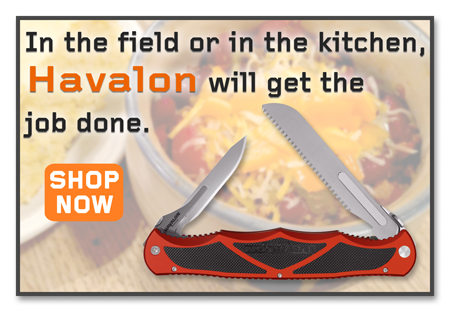By Steve Sorensen
What should you be doing in March to insure
gobbler success this spring?
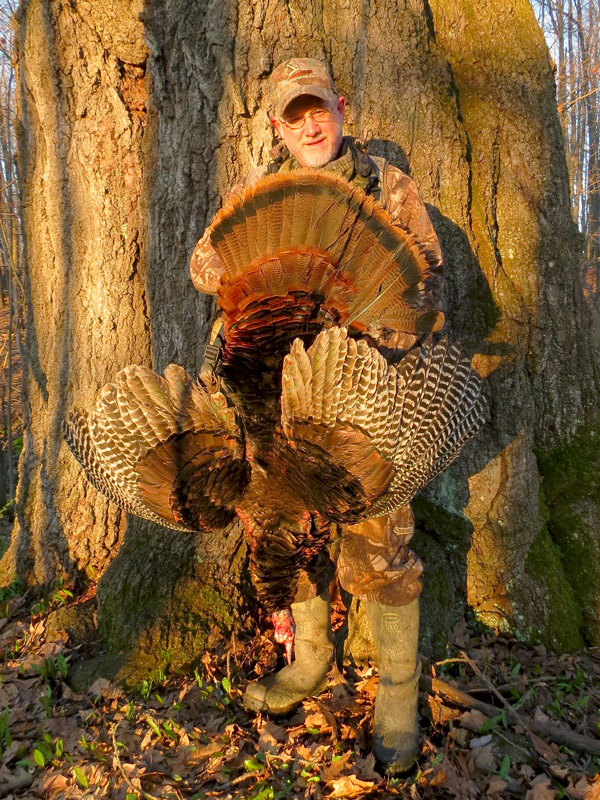
If you begin scouting early, you’re more likely to get your gobbler early. Here’s one that bought my call on opening day. (Photo: Steve Sorensen)
With the National Wild Turkey Federation convention behind us, and turkey gear makers peddling their wares at sportsman’s shows across the country, it’s not too early to begin scouting for spring gobblers. Southern hunters should be scouting hot and heavy now, with the earliest seasons only weeks away. But what about those hunters who seldom kill a gobbler. Those who lose enthusiasm. Those for whom failure becomes a way of the woods in spring?
The answer is to become an early March turkey hunter. Even in the far north reaches of wild turkey habitat, it’s not too early to start looking for the place where you’ll tie your tag to the leg of a longbeard. If you want to increase your odds of success, it’s time to begin scouting now.
You’ll often find spring gobblers at the same places year after year, but the turkeys don’t guarantee it. That’s because many variables control where they go. Their first consideration is food. They always need food, and they’ll look for the easiest place to
find it.
Another consideration is snow depth. Harsh winters will cause turkeys to form big flocks, sometimes numbering over 100. That’s because these three-toed birds need to scratch through snow for food, so several flocks combine where they capitalize on easy food sources. When snow isn’t deep they won’t all feed in the same place, so you’ll see only 10 or 20 at a time.
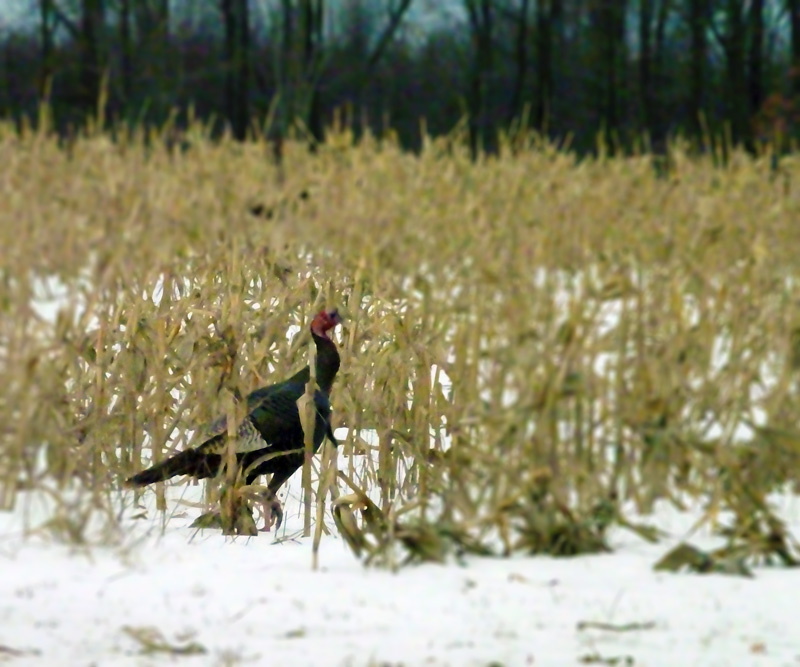
Early or late on a winter day, a 20-mile drive on rural roads will likely put some turkey territory on your list of places to hunt. (Photo: Steve Sorensen)
Here are four productive mid-winter scouting strategies.
- Drive to scout — Where turkeys are now may not be where they will be in May, but it still pays to scout from a vehicle. With snow depths of less than a foot, you should see turkeys out feeding on easy pickings. Drive rural roads and look for the big black birds out in the fields. Use binoculars. Note particularly cornfields. Also look for fields where farmers have spread manure. The sound of a tractor is a dinner bell calling turkeys to feed on undigested seeds and bugs that find their own nourishment in the manure.
- Study maps — Once you see some turkeys, get a map and focus first on those areas. Examine topographic maps for roosting areas. The big birds will probably use the wooded draws and hollows not far from the fields. Also look at online GIS maps (Geographic Information Systems) or plat maps that show property boundaries, and figure out who owns the land. Start making a list of places where the hunting looks promising, and begin approaching the landowners to ask for permission to scout. Don’t overlook properties adjacent to farms. Lock in a place early and save yourself from last-minute frustration as the clock ticks down to opening day.
- Boots on the ground — You can take those first two steps no matter how cold the weather or how deep the snow. Now it’s time to step into the woods near where you see gobblers in fields. If you find hemlocks or white pines, it’s likely that turkeys are roosting there because evergreens make life easier by offering thermal cover and keeping snow from accumulating on the ground. Any nearby thorn brush might still hold crabapples, and hardwoods might offer acorns or other nuts for turkeys to feed on. In the hollows you’ll find spring seeps warm enough to provide turkeys protein in the form of invertebrate life, and grit turkeys need for grinding food in their gizzards. Look for tracks (and keep your eyes open for shed antlers).
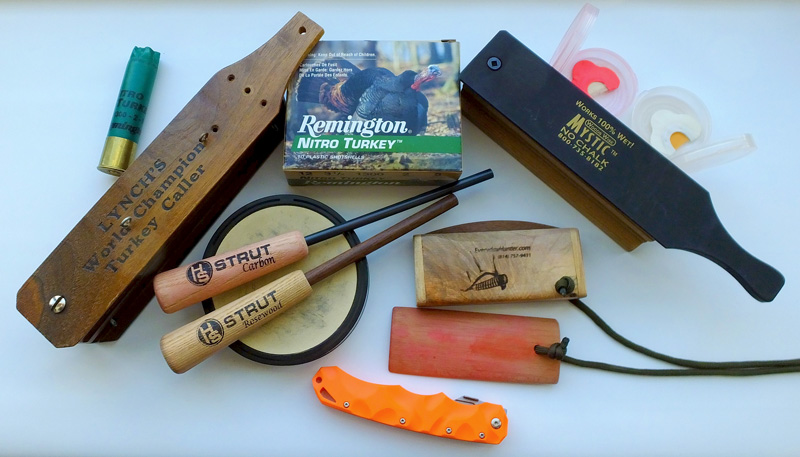
I always say turkey calls are like knives — you can never have too many. But not every turkey call will find a place in your vest. Well in advance of the season, go through your calls and spend a half hour per week finding out which calls you can really make sing songs that attract gobblers. (Photo: Steve Sorensen)
- Practice your turkey calling — Back in the warmth of your house or car, practice your turkey calling. Don’t wait until the week before season to decide what calls you use. Get all your calls out and spend a half hour with them at least once a week for a month. When you get comfortable with three or four styles, do some serious practice with hen yelps, soft tree calls, purrs and clucks. That’s usually all you need to call in a gobbler, although I’ve expanded my own repertoire to include fighting purrs. (I should have started using fighting purrs years ago. They’re deadly on the scratchbox call I make — see my website, www.EverydayHunter.com.)
I always say turkey calls are like knives — you can never have too many. (Hint: if you haven’t tried a Havalon knife, there’s your reason to get one. You’ll be glad you did!)
Three of these four things don’t depend on the weather, so it’s not a major commitment to begin scouting turkeys in early March. The bottom line is that if you start these things now, you’ll be miles ahead of the guy who begins his scouting a week or two before the season opener.
 Steve Sorensen is the author of Growing Up With Guns, and The Everyday Hunter Handbook Series. He also writes an award-winning newspaper column called The Everyday Hunter®, and contributes content to Havalon Nation. He has published articles in top magazines across the USA, and won the 2015 “Pinnacle” Award for magazine writing. Invite Steve to speak at your next sportsman’s event, and follow him at www.EverydayHunter.com or on Facebook at www.facebook.com/The-Everyday-Hunter-319307228936/.
Steve Sorensen is the author of Growing Up With Guns, and The Everyday Hunter Handbook Series. He also writes an award-winning newspaper column called The Everyday Hunter®, and contributes content to Havalon Nation. He has published articles in top magazines across the USA, and won the 2015 “Pinnacle” Award for magazine writing. Invite Steve to speak at your next sportsman’s event, and follow him at www.EverydayHunter.com or on Facebook at www.facebook.com/The-Everyday-Hunter-319307228936/.
Click here to read Jerry’s complete review…
3,049 total views, no views today



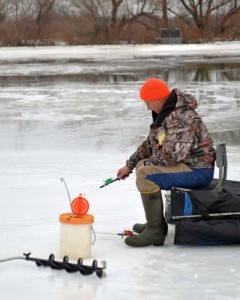 I got a few holes through the ice, but it was far from easy despite the fact that my shoulders and back were pretty strong. Not long after that, the current styles of hand powered, drill-type augers became readily available – a big improvement, but getting through thick ice was still a lot of work. When ice fishing for panfish, a 5-inch auger is adequate, and much easier to use than a 7-inch auger. In either case, with each passing winter my shoulders and back began to show their age.
I got a few holes through the ice, but it was far from easy despite the fact that my shoulders and back were pretty strong. Not long after that, the current styles of hand powered, drill-type augers became readily available – a big improvement, but getting through thick ice was still a lot of work. When ice fishing for panfish, a 5-inch auger is adequate, and much easier to use than a 7-inch auger. In either case, with each passing winter my shoulders and back began to show their age. The right tools are important, and today sharpeners with positive angle guides are common. These feature sharpening stones set in plastic holders which are attached to metal rods. The edge to be sharpened is set in a clamp with slots to hold the metal rod at the correct angle. Each kit has three, maybe more, grades of sharpening stones. With the very hard blades on ice augers, diamond stones may be best, but they must be purchased separately.
The right tools are important, and today sharpeners with positive angle guides are common. These feature sharpening stones set in plastic holders which are attached to metal rods. The edge to be sharpened is set in a clamp with slots to hold the metal rod at the correct angle. Each kit has three, maybe more, grades of sharpening stones. With the very hard blades on ice augers, diamond stones may be best, but they must be purchased separately.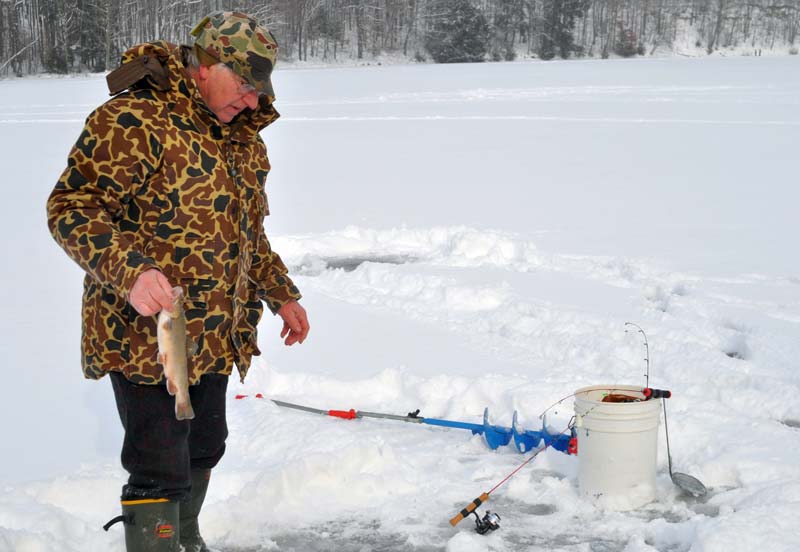 After sharpening one side of the blade, the side which has the bevel, remove rollover from the opposite side. But do this without creating any bevel on this side of the blade.
After sharpening one side of the blade, the side which has the bevel, remove rollover from the opposite side. But do this without creating any bevel on this side of the blade. Mike Bleech has been a full-time freelance writer/photographer since 1980 with more than 5,000 articles published in more than 100 publications. He is the outdoor columnist for the Erie Times-News and the Warren Times Observer. Over the years he has become an accomplished trout fisherman and an expert at hunting the Allegheny National Forest and other public lands.
Mike Bleech has been a full-time freelance writer/photographer since 1980 with more than 5,000 articles published in more than 100 publications. He is the outdoor columnist for the Erie Times-News and the Warren Times Observer. Over the years he has become an accomplished trout fisherman and an expert at hunting the Allegheny National Forest and other public lands.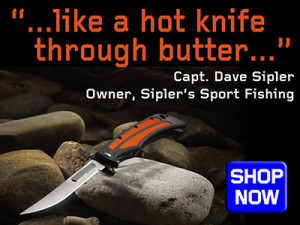
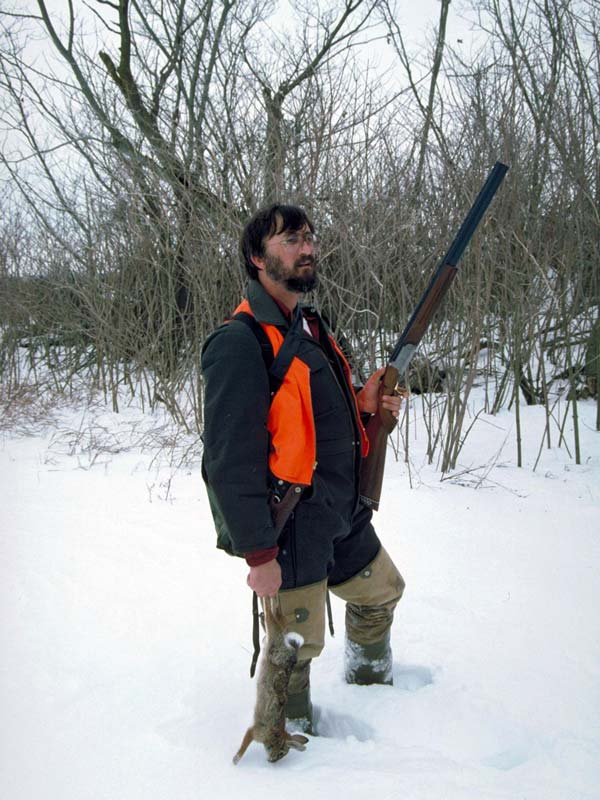
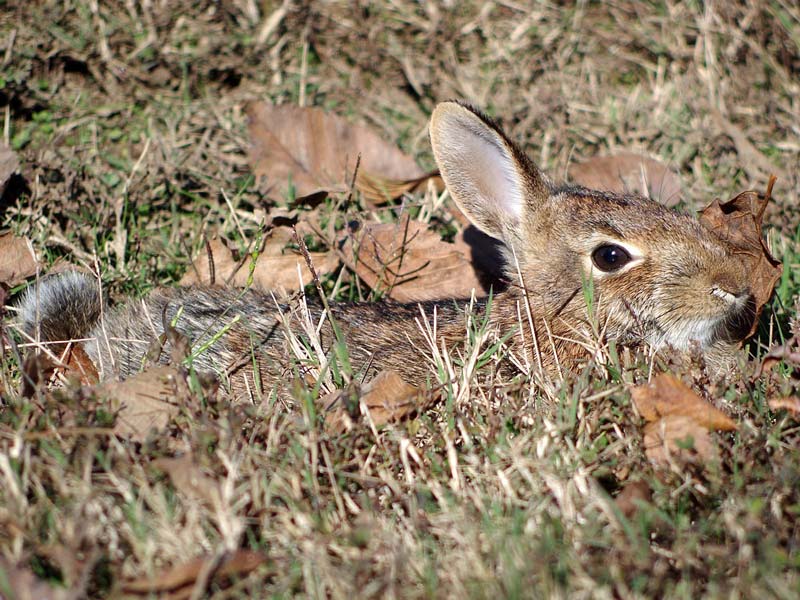
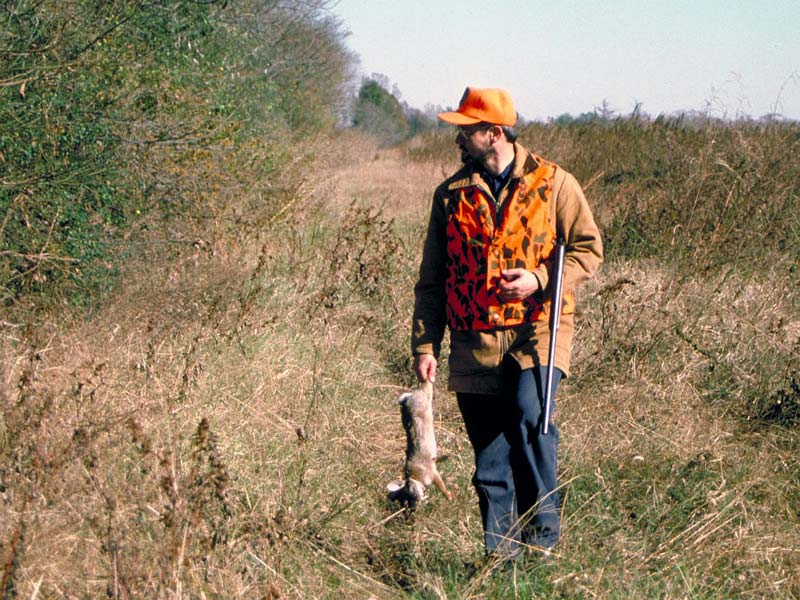
 Keith Sutton of Alexander, Arkansas, has been following his uncles’ advice for more than half a century while hunting rabbits throughout the southeastern U.S. He is the author of more than a dozen books on hunting, fishing and the outdoors. Autographed copies are available through his website,
Keith Sutton of Alexander, Arkansas, has been following his uncles’ advice for more than half a century while hunting rabbits throughout the southeastern U.S. He is the author of more than a dozen books on hunting, fishing and the outdoors. Autographed copies are available through his website, 
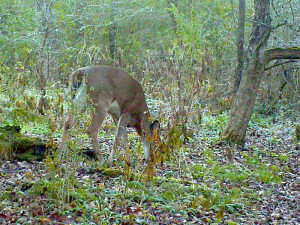

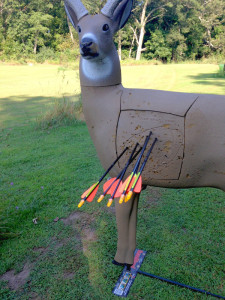
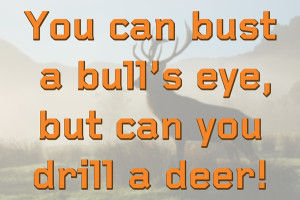 dinner and any deer will do, you need to act with a greater sense of urgency when a shot opportunity comes along. This means being instantly ready to draw your bow, anchor, acquire the sight pin on the animal’s vitals and release the arrow.
dinner and any deer will do, you need to act with a greater sense of urgency when a shot opportunity comes along. This means being instantly ready to draw your bow, anchor, acquire the sight pin on the animal’s vitals and release the arrow.
 Tracy Schmidt is a deer hunting enthusiast, master gardener and certified food-preservation specialist from Wisconsin. Her husband Dan is editor-in-chief of Deer & Deer Hunting magazine and co-host of Deer & Deer Hunting TV on NBC Sports.
Tracy Schmidt is a deer hunting enthusiast, master gardener and certified food-preservation specialist from Wisconsin. Her husband Dan is editor-in-chief of Deer & Deer Hunting magazine and co-host of Deer & Deer Hunting TV on NBC Sports.



